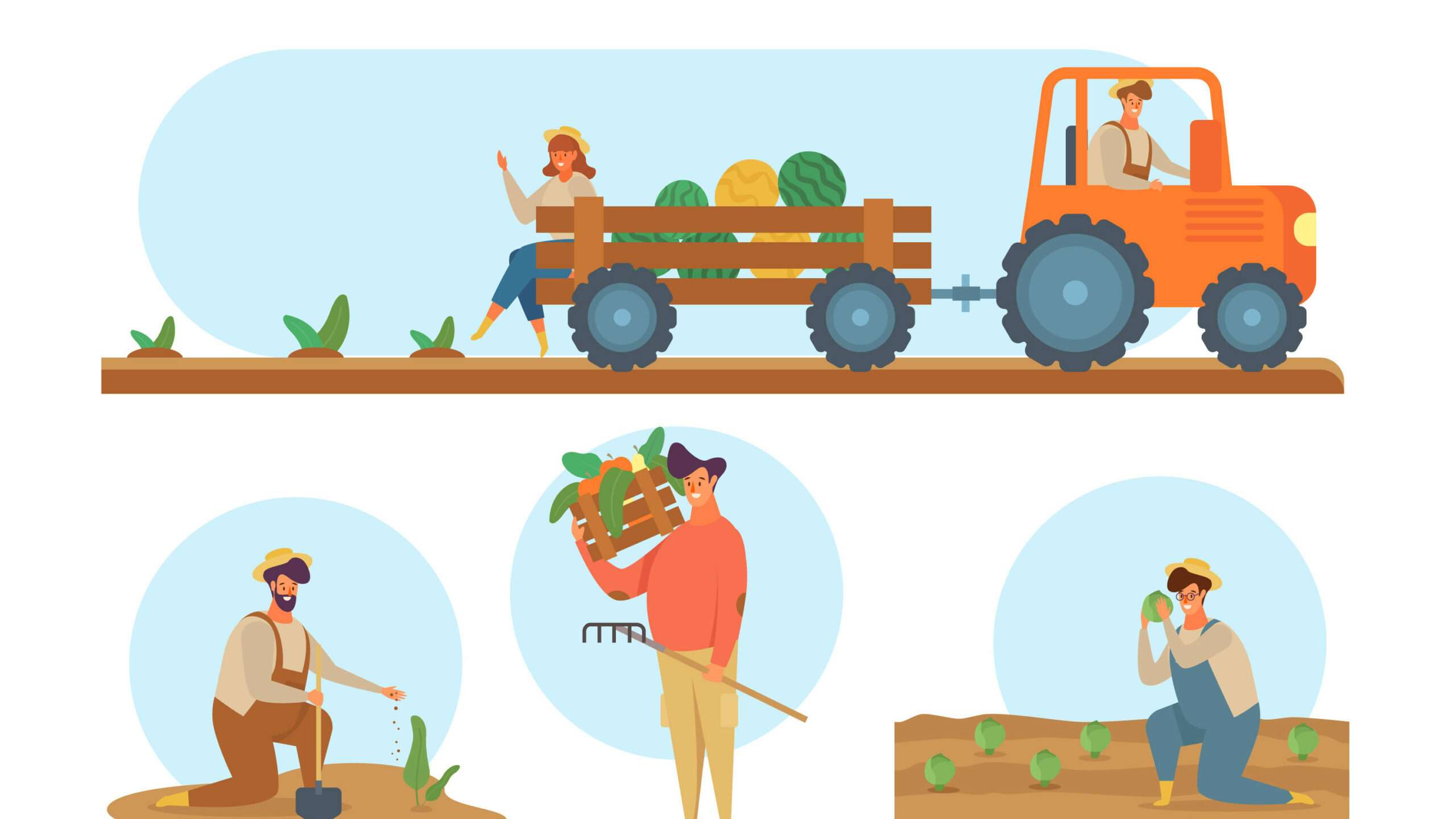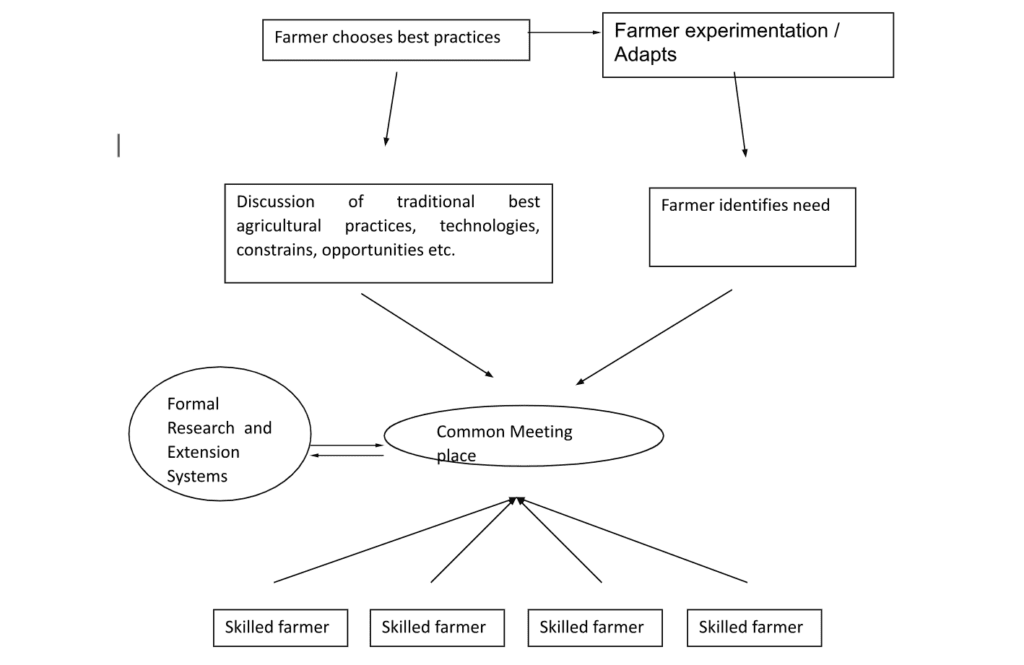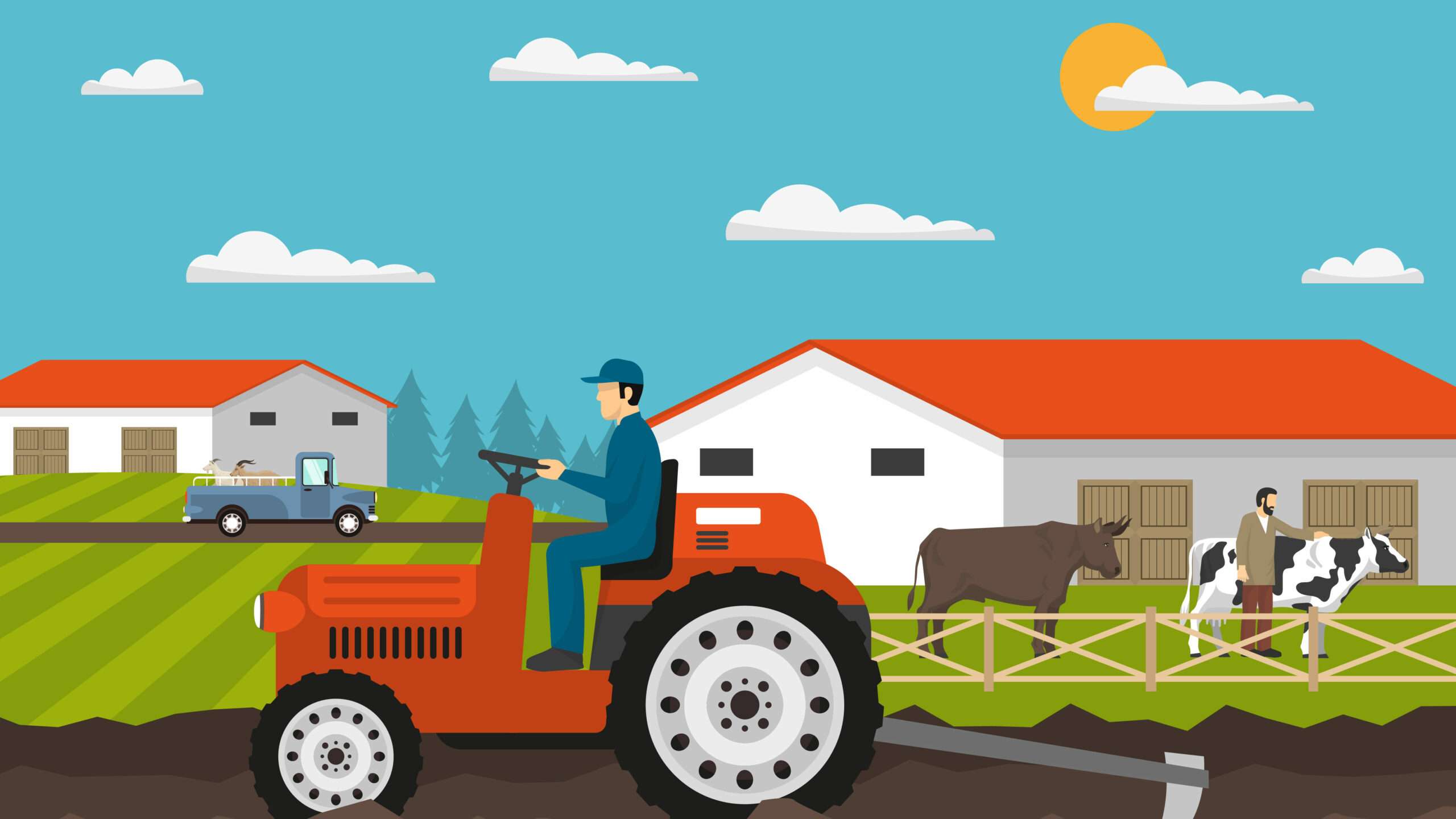Government extension systems have been in operation for several decades. However, their effectiveness and efficiency pose challenges when it comes to reaching marginalized communities in remote tribal areas, both within the country and globally. To overcome these limitations and ensure a broader reach, there is a growing need for Farmer-to-Farmer extension systems. These systems have the potential to revolutionize the promotion of regenerative agriculture systems and practices.
Farmer-to-Farmer extension is built upon the understanding that significant progress can be made when rural communities come together for their mutual benefit. It acknowledges that farmers possess valuable knowledge about food production within their specific agro-ecological conditions, while also recognizing the benefits of external experiences. Local individuals typically have control over the planning and implementation of these programs. This approach tends to be more efficient as it aligns with the needs and interests of the local population.
Table of Contents
Principles and Methods in Farmer-to-Farmer Extension

Farmer innovation and farmer solidarity are the two pillars of Farmer-to-Farmer extension. These primary aspects are encouraged and reinforced by small-scale experimentation and Farmer-to-Farmer training. In turn, such experimentation and training are implemented through and complemented with promoter-led training and workshops, field visits, and Farmer-to-Farmer seminars, gatherings, and symposiums. Farmers do not just share information, they share culture. This is the basis for sharing knowledge (which can be shared but not taught).
While professionals support this process with technical information, methodological training and organizational capacity building, it is still primarily a farmers’ activity based on and in their own culture. Put simply, there can be no farmer-led extension if one of the parties is not a farmer.
Structure of Farmer-to-Farmer Extension Networks

Stages in Farmer-to-Farmer Extension Program
| Steps in farmer-to-farmer extension programme | ||
| Sl. No. | Stages | Activities |
| 1 | Getting started | Diagnostic, site selection, identification of interested farmers, visits to innovative farmers’ field, first problem assessment |
| 2 | Identifying useful small-scale elements | As suggested by innovative farmers |
| 3 | Design of experiments | Based on local farming situations and practices |
| 4 | Sharing experiments | Group visits to field experiments undertaken |
| 5 | Sharing results | Local level / other farmers /Government / Policy makers etc. |
| 6 | Spreading and consolidating the movement | GP, Block, District, State and National levels |
Methodological Principles of a Farmer-to-Farmer Extension System
- Start small, go slowly
- Use small-scale experimentation
- Limit the introduction of external technology
- Obtain rapid and recognizable results
- Develop a multiplier effect
The advantage of these basic principles is their flexibility.
Components of the Methodological Framework
- Problem analysis
- Basic concepts of ecology, equilibrium and synergy
- Activities for group agro-ecological appraisals of farms and watersheds, including recording ecological histories, identifying weak links in the ecological chain and limiting factors in production, selecting principal problems, understanding their causes and proposing possible solutions
- Experimentation
- Experimentation based on overcoming limiting factors, controlling variables
- Making valid comparisons and accurate measurements within the group
- Developing working hypothesis and designing experiments to test these
- Methods for recording observations and results
- Promotion
- Horizontal communication
- Developing natural resource management models
- Spreading traditional best agricultural practices/technologies relating to land development, water management, seed sowing, germination, storage and exchange mechanisms, pest management, harvesting, post-harvest technologies etc.
Guidelines for External Agencies to Facilitate a Farmer-to-Farmer Extension System

- Actively promote the development of sustainable, low-external input farming systems
- Provide direct and indirect technical, financial and managerial support for groups of farmer promoters.
- Train and orient farmer extensionists methodologically and technically in their new support roles.
- Document farmers’ experiences and testimonies in sustainable agriculture and make them available to different stakeholders through various communication channels preferably pictorials and mass media.
- Provide local, regional and national opportunities for farmer gatherings and exchanges, workshops etc.
Farmer-to-Farmer extension approach would also be relevant for regional agricultural policymakers, as the information obtained from the farmers from diverse agro-ecological situations will help make agricultural programmes more pragmatic. The programmes would better reflect farmer demands and enable effective implementation. It is also likely to give policymakers insight into the possible new roles for the agriculture extension workers, providing a rationale for redesigning their role as “carriers” of information.
The promotion of Farmer-to-Farmer extension systems should be driven by local farmers’ networks. This approach would facilitate ongoing dialogue among farmers in the district, fostering the exchange of sustainable agricultural practices pioneered by innovative farmers. The dissemination of relevant technologies would become more accessible through this network. Furthermore, these farmer gatherings have the potential to evolve into farmers’ organizations in the future, serving as advocacy groups at the district level. These organizations could advocate for farmers’ rights, effectively address their concerns and constraints with the state, and ensure their voices are heard.
Also read:
Wild Food Plants (WFPs) – A Key Component To Ensure Food And Nutritional Security


